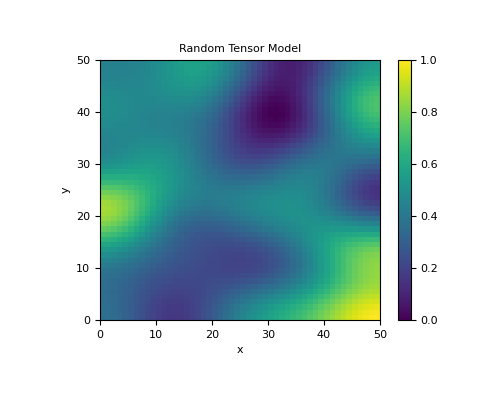discretize.utils.random_model#
- discretize.utils.random_model(shape, random_seed=None, anisotropy=None, its=100, bounds=None, seed=None)[source]#
Create random tensor model.
Creates a random tensor model by convolving a kernel function with a uniformly distributed model. The user specifies the number of cells along the x, (y and z) directions with the input argument shape and the function outputs a tensor model with the same shape. Afterwards, the user may use the
mkvc()function to convert the tensor to a vector which can be plotting on a corresponding tensor mesh.- Parameters:
- shape(
dim)tupleofint shape of the model.
- random_seed
numpy.random.Generator,int,optional pick which model to produce, prints the seed if you don’t choose
- anisotropy
numpy.ndarray,optional this is the kernel that is convolved with the model
- its
int,optional number of smoothing iterations
- bounds
list,optional Lower and upper bounds on the model. Has the form [lower_bound, upper_bound].
- shape(
- Returns:
numpy.ndarrayA random generated model whose shape was specified by the input parameter shape
Examples
Here, we generate a random model for a 2D tensor mesh and plot.
>>> from discretize import TensorMesh >>> from discretize.utils import random_model, mkvc >>> import matplotlib as mpl >>> import matplotlib.pyplot as plt
>>> h = [(1., 50)] >>> vmin, vmax = 0., 1. >>> mesh = TensorMesh([h, h])
>>> model = random_model(mesh.shape_cells, random_seed=4, bounds=[vmin, vmax])
>>> fig = plt.figure(figsize=(5, 4)) >>> ax = plt.subplot(111) >>> im, = mesh.plot_image(model, grid=False, ax=ax, clim=[vmin, vmax]) >>> cbar = plt.colorbar(im) >>> ax.set_title('Random Tensor Model') >>> plt.show()
(
Source code,png,pdf)

